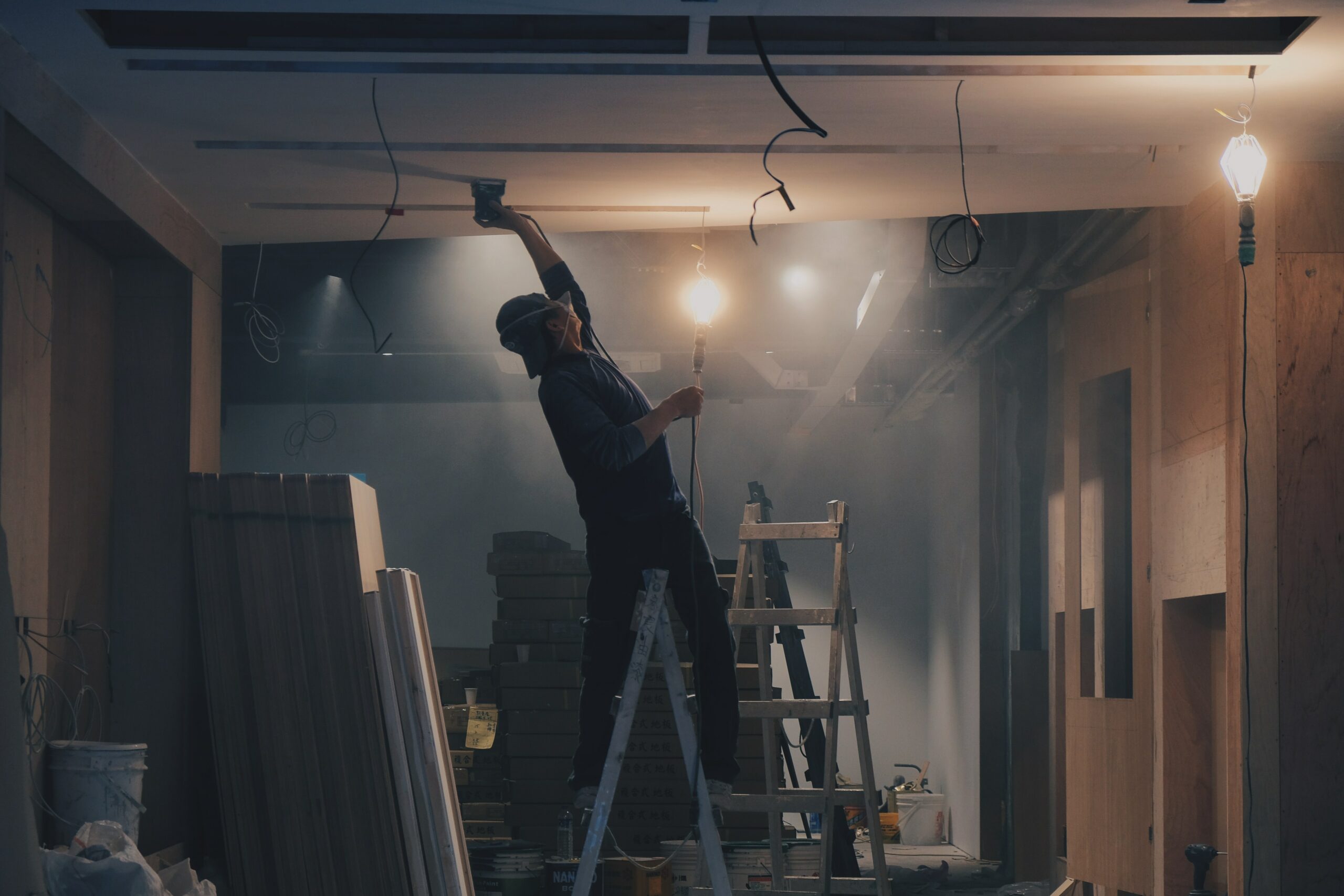If your home was built before the year 1980, it’s unlikely that you have a vaulted ceiling. If so, you probably have what is called a “popcorn ceiling” instead. This type of ceiling is very common and became popular in the 1980s as an alternative to standard plaster ceilings. Popcorn ceilings are made from acoustical plaster, which gives them their unique appearance. They provide a nice, neutral background for your other decorations and give your room a finished look. However, if you dislike the aesthetics of your popcorn ceiling or simply want to make your home more modern, here is how you can remove it and replace it with something more to your liking.
What Is a Popcorn Ceiling?
A popcorn ceiling is a type of drop ceiling that is made from a spongy material, covered with a layer of acoustic plaster. In the 1940s and 1950s, it was common to cover a ceiling like this with a layer of gypsum drywall, but in the 1980s, people in the construction industry realized that popcorn was cheaper to make and worked just as well. They also discovered that it was much easier to install due to its lightweight nature. The light texture of popcorn makes it an excellent surface for decorative painting, but it is also easy to clean and stain-resistant. Unlike other ceiling textures, it is not prone to collecting dust and allergens. Its texture also makes it a great soundproofing material. They are used primarily as a decorative finish to cover the lower portion of a dropped ceiling between the floor and the joists of the attic above. The material used to create popcorn ceilings is an acoustic plaster. Overall, this material is lightweight, spongy, and easily applied.
How to Remove a Popcorn Ceiling
First, you will need to determine the best method for removing your popcorn ceiling. Your choice will depend on a variety of factors, including the accessibility of the ceiling and your budget. Here are a few of the most common ways to remove a popcorn ceiling: – Sanding and repainting – this is the cheapest method, but also the most time-consuming. You can cover the area with plastic sheeting and use a sander to sand the surface. Alternatively, you can use a handheld vacuum to suck off the popcorn. After sanding off the popcorn, you can repaint the surface. – Epoxy resin overlay – this is a more expensive option that will increase the value of your home. It involves applying a layer of resin to the ceiling. This will make it easy to remove in future, but does require professional installation. – Drywall ceiling removal – this is a significantly more expensive option than the previous two. It involves removing the entire drywall ceiling and replacing it with a new one. It can make a huge difference to the aesthetics of your home, but is also a major undertaking with a large financial cost.
Why Would I Want to Remove My Popcorn Ceiling?
There are a variety of reasons why you might want to remove your popcorn ceiling. Popcorn ceilings are often difficult to work with, especially if you want to install fixtures such as lighting. They also come with a number of aesthetic drawbacks, including a dated appearance. If you are looking to modernize your home and are unhappy with the aesthetics of your popcorn ceiling, you might want to remove it and replace it with drywall. In addition, popcorn ceilings have a very low insulation value, so if you live in a drafty or poorly insulated home, you may want to remove the material and replace it with a material that offers significantly better insulation value.
Sanding and Repainting
If you want to remove your popcorn ceiling but don’t have the budget for a more expensive method, sanding and repainting is a good option for you. This method is inexpensive and can be completed in a relatively short amount of time. However, it does require a significant amount of work. You will need to cover the floor and surrounding areas with plastic sheeting and wear a respirator mask when sanding the popcorn. The sanding and repainting process is messy and can be very difficult, as the popcorn is very spongy and difficult to get off the ceiling. This method is also time-consuming and will not increase the value of your home, as it is not a permanent solution.
Epoxy Resin Overlay
If you want to remove your popcorn ceiling but want a more permanent solution, the best option for you is an epoxy resin overlay. This method is more expensive than sanding and repainting, but it will permanently remove your popcorn ceiling and also improve the acoustics in your home. You can have a contractor apply this material to the ceiling and it can be easily removed at a later date if needed. The process is fairly simple and does not require a lot of work. However, it does require a significant monetary investment, which may be a drawback for some homeowners.
Drywall Ceiling Removal
If you want to remove your popcorn ceiling and have the budget for the more expensive drywall ceiling removal method, this is the best option for you. This method is significantly more expensive than the others, but it is also a much more permanent solution. It will also greatly improve the aesthetics of your home, making it look more modern. When you remove the popcorn ceiling you can also remove the underlying material. This will provide your home with much better insulation. The removal process is messy, but you can hire a contractor to do the work for you.
Conclusion
Popcorn ceilings were used as a way to add acoustic properties to a room (since they are made from a soft material). They are often found in older homes and are easy to identify because they look like someone threw popcorn onto the ceiling. They’re also easy to remove and replace with a different type of ceiling. A popcorn ceiling is a great choice for a room that doesn’t get a lot of foot traffic, like a basement or a nursery. They are also great for rooms where you don’t have a lot of headroom, like a stairwell or a hallway. They do provide a distinctive look and can add character to a room, but if you would prefer a different type of ceiling, you can easily remove it. When removing a popcorn ceiling, you can use one of three methods to remove the acoustic plaster: sanding and repainting, epoxy resin overlay, or drywall ceiling removal. Depending on your budget and the type of room that the ceiling is in, you can choose the method that’s best for you.





